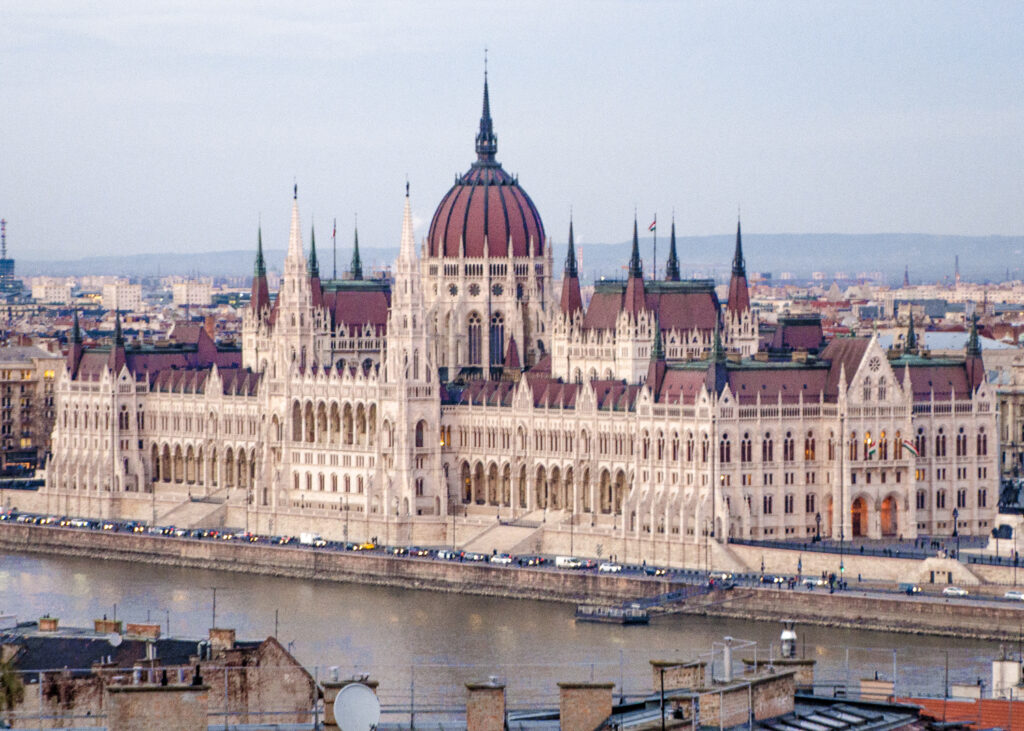Disclosure: This post contains affiliate links that I may earn a small commission from if you purchase something through them. This comes at no extra cost to you!
Budapest, also known as “The Queen of The Danube” and “The City of Spas”, is the capital of Hungary and unquestionably one of Europe’s most beautiful and must-see cities.
Home to the largest thermal spa that exists on Earth, Budapest is unsurprisingly known as the thermal spa capital of the world. If soaking in the steamy hot waters of Széchenyi Thermal Baths is not your thing, fear not, as there’s an abundance of other attractions to see here too.
The blend of Western and Eastern Europe makes Budapest quite unique. Mix that with rich history, affordability, majestic architecture, famous landmarks, quirky bars and the mighty Danube River and you can quickly see why Budapest is one of the continent’s most popular budget travel destinations.
In this guide I have detailed the 17 best sights and all need-to-know tips to help you plan your trip to the capital on Hungary.
Table of Contents...
Toggle
Useful information for Budapest
- Country: Hungary
- Language: Hungarian
- Population: 1.75 million
- Currency: Hungarian Forint/HUF – £1/$1 = 478/392 HUF
- Visa info: Hungary is part of the Schengen Zone, allowing visitors from 27 European countries to travel here for up to 90 days without a visa. Find out more here.
- Popular for: Historical buildings, thermal spas, quirky bars, spectacular architecture
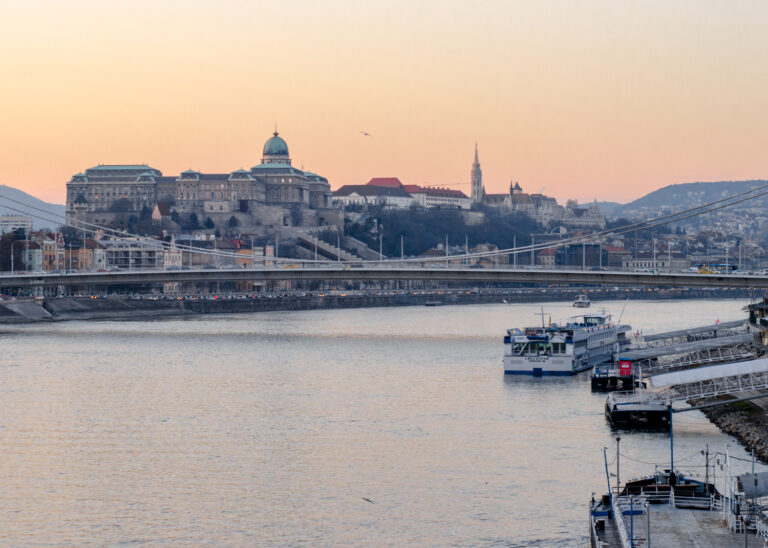
Where is it
Check it out on the interactive map below.
When to visit
The most popular time to visit Budapest is in the summer (June to August) but I’d suggest the best time to visit is during the shoulder seasons of September to October or April to May.
Everything will be quieter at this time of year, so you’ll avoid most of the summer crowds and accommodation will usually be slightly cheaper too.
November to February will be extremely quiet but much colder.
How to get here
There are many way to get to Budapest, from planes, trains, buses, ferrys or by car. How getting here will depend on where you’re coming from and what your budget looks like.
Overall the best way to reach Budapest internationally is to fly in, and the best way domestically is to get a bus or train.
- Flight: Budapest has a well connected international airport, with flights coming from all over Europe. Skyscanner is the best place to search for flights. From the airport there is an airport train or for a door-to-door service I always book an Uber. As a rule, I never use airport taxis because they’re always more expensive and more likely to rip you off.
How to get around
- Metro: There are trams and subway lines for affordable short journeys around the city’s important areas. The Budapest metro line opened in 1896, making it the oldest underground railway in continental Europe and the world’s oldest electric underground system. The system is now listed as a UNESCO world heritage site as a result. Tickets for trams and trains are 350 HUF for a single trip or you can buy a block of ten for 3,000 HUF.
- Uber: Uber is always cheaper than a taxi and I would always recommend this for airport transfers or getting around a city if public transport isn’t ideal for you. Journeys can be paid automatically by card so you don’t need to worry about having the right change too.
- Tours: Another way to get around quickly and efficiently is by guided tour. This means you can see the sights with a professional guide while receiving interesting information about everything. For the best tours, I use GetYourGuide and Viator.
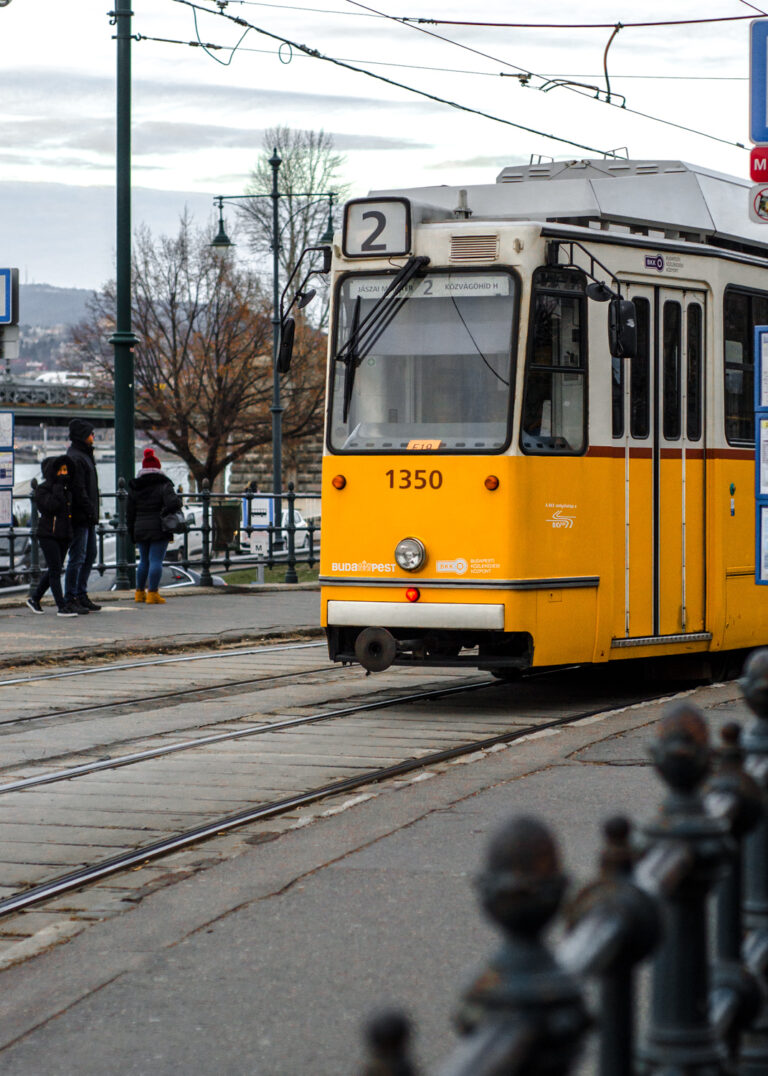
Where to stay in Budapest
There are two sides to the city; Buda and Pest.
Buda is more of a residential and sightseeing area where all the historic landmarks are located are mixed with a slow, relaxed vibe. Cross the Danube River and you’ll be in Pest, which is more popular with travellers for its affordable accommodation, funky ruin bars, rich cafe culture and shopping possibilities.
So, in summary, Pest is best for cheap accommodation and socialising, whereas Buda is best for cultural sightseeing. I suggest you stay on the Pest side as this is where most tourists go.
I recommend using Booking.com, Airbnb or Hostelworld to find the best deals on budget accommodation in the city.
The best hostel in town:
How long to stay
This is entirely personal, but at an average pace I feel like 3 days would be perfect. If you like to travel faster you could probably squeeze this itinerary into 2 days, but you may have to make some sacrifices.
Expected costs
Budapest is a very popular European destination for budget travellers due to its amazing affordability.
To see all of the top sights Budapest has to offer while sticking to a backpacker’s budget you’d be looking at around 12,000 HUF per day (about £25) to stay in a hostel and cook your own meals.
A good mid range budget would be around 20,000 HUF (£44) which will get you some finer things like private accommodation and a restaurant dinner.
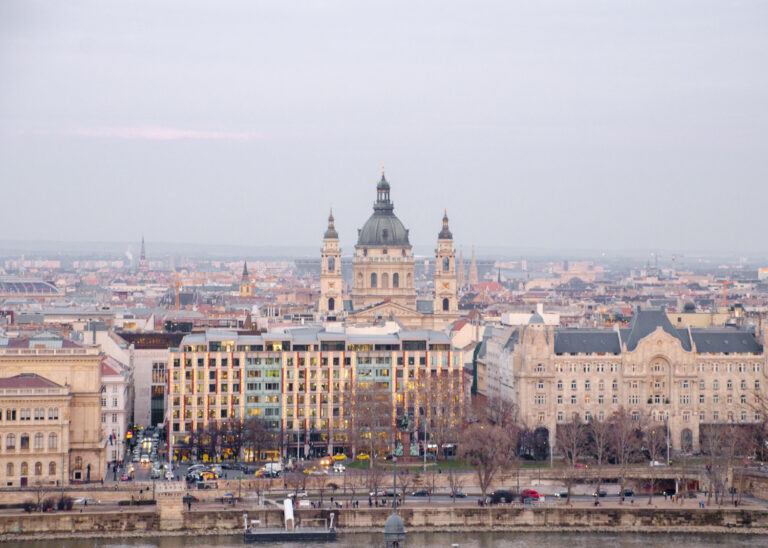
A brief history of Budapest
Before you visit, it’s important to know a little bit of history about the city.
The most important thing to note is the geography of Budapest. The city is split into two parts by the mighty Danube River that flows through the middle. Buda and Pest were separate cities until they merged together in 1973, forming Budapest as we know it. Read the ‘where to stay’ section for more information on Buda and Pest.
During the First World War, Hungary was part of the Austria-Hungary empire. Austria-Hungary collapsed in 1918 after the war ended, but somehow Budapest remained Europe’s 2nd largest city after Berlin back then.
During WWII Hungary was on the side of the Axis Powers (the Nazis) and around 80% of the city was completely destroyed through bombing missions by the US. That included all seven bridges and important landmarks like Buda Castle.
In more recent history, in 1987, many historic sights along the Banks of the Danube in Budapest were named UNESCO World Heritage Sites due to their historic value and beauty.
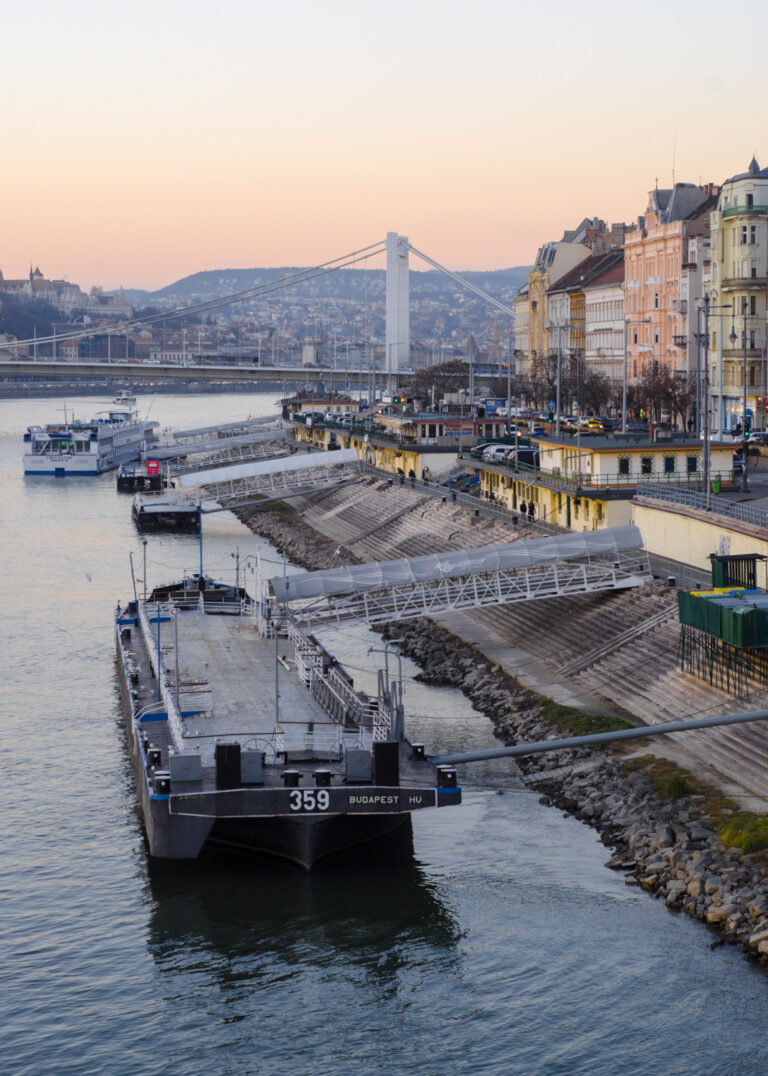
3 day Budapest itinerary & 17 best things to do
Day 1
Free walking tour
Kick your visit off the right way and gain some first-hand local knowledge on a free 2-3 hour walking tour around the city with Generation Tours Budapest.
It’s the perfect way to get your bearings in a new city and learn something about Budapest before you explore under your own steam. I always find the guides on free tours to be more entertaining than on a regular paid tour because they know they have to impress you to make any money that day!
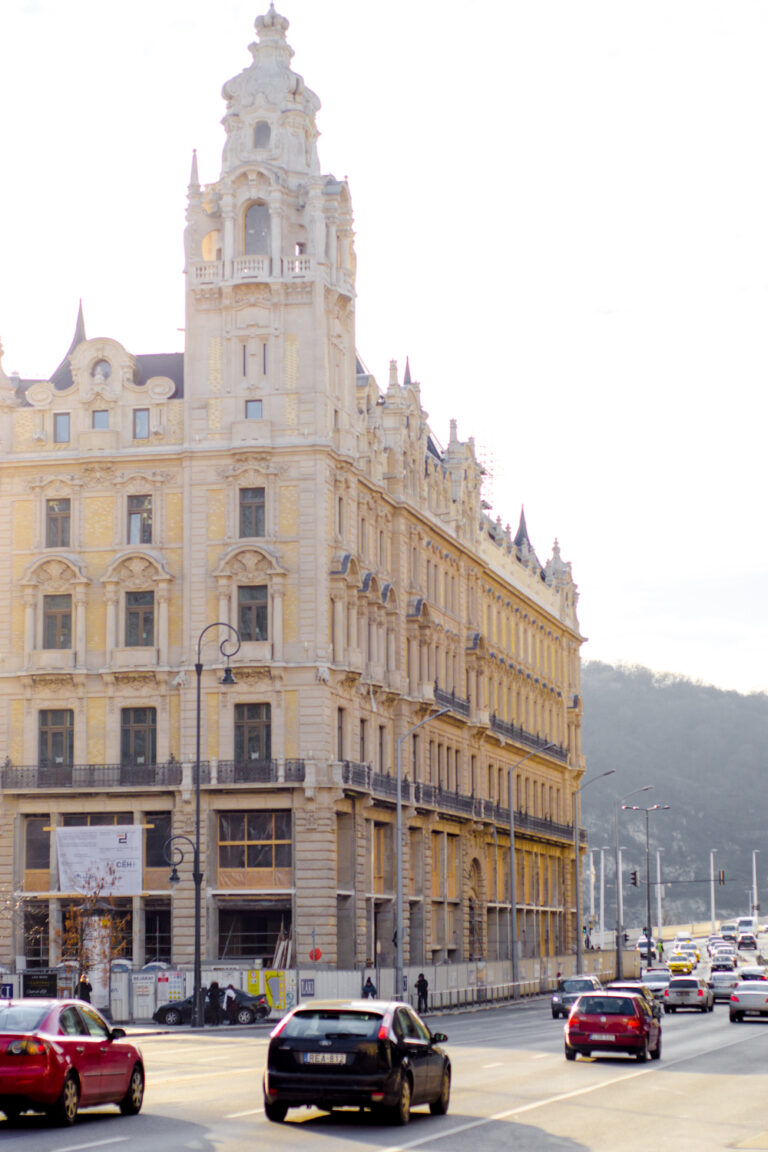
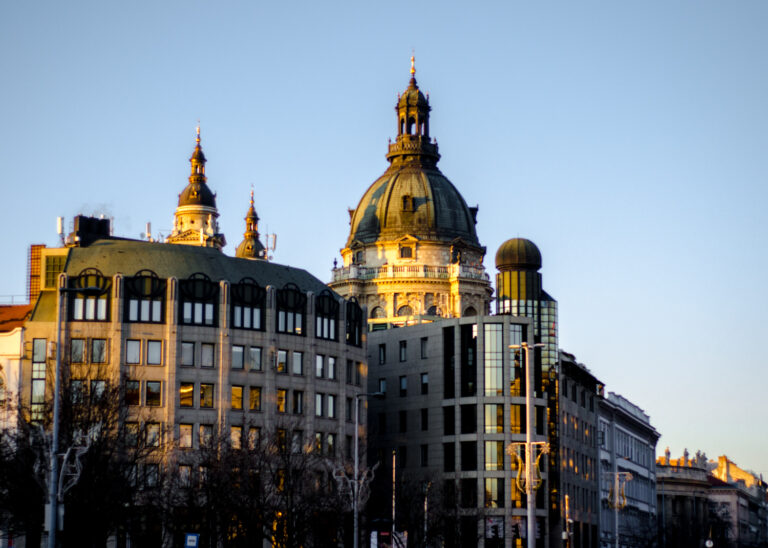
Use this as a chance to ask the local guide any questions you may have about the city, for example where the best local restaurant is or if there are any popular tourist scams to avoid.
Soak up the information and get your bearings as you wander around the best sights.
If you’re happy with the tour, don’t forget to tip!
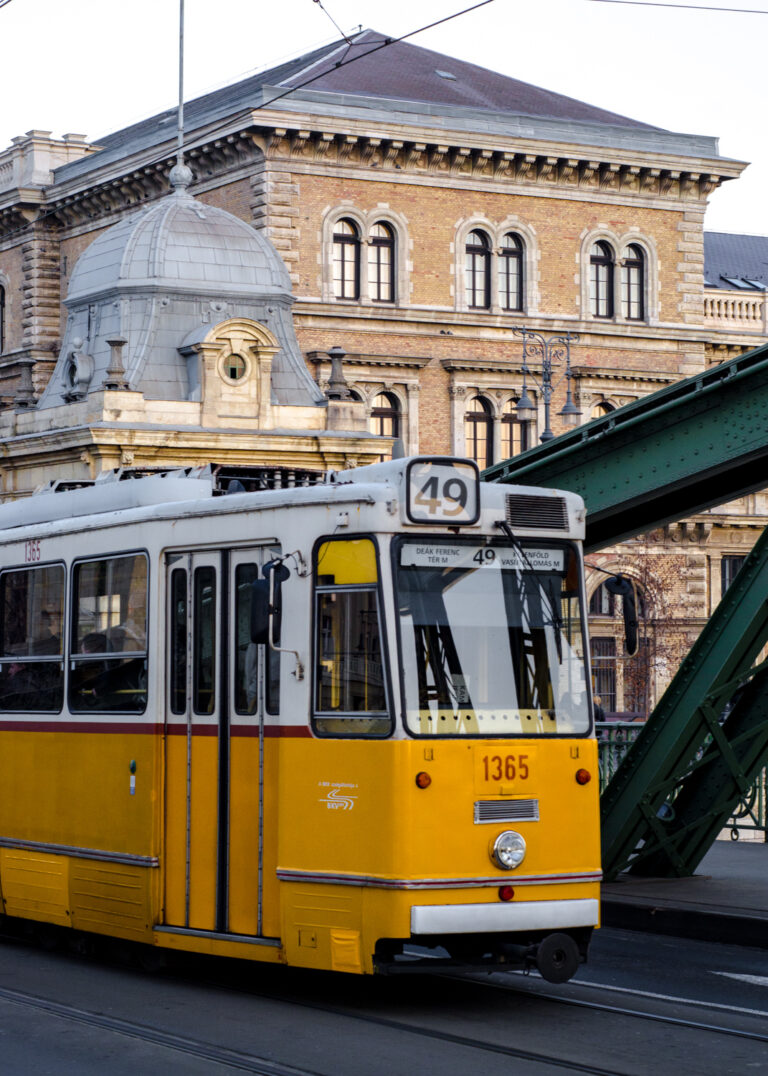
Széchenyi Chain Bridge
This picturesque stone bridge is an icon of Budapest that crosses the Danube, connecting Buda to Pest, and is one of the city’s most well known landmarks.
While crossing Széchenyi Chain Bridge make sure to look all around, as you can spot many historic UNESCO World Heritage sites and the mighty Parliament building too.
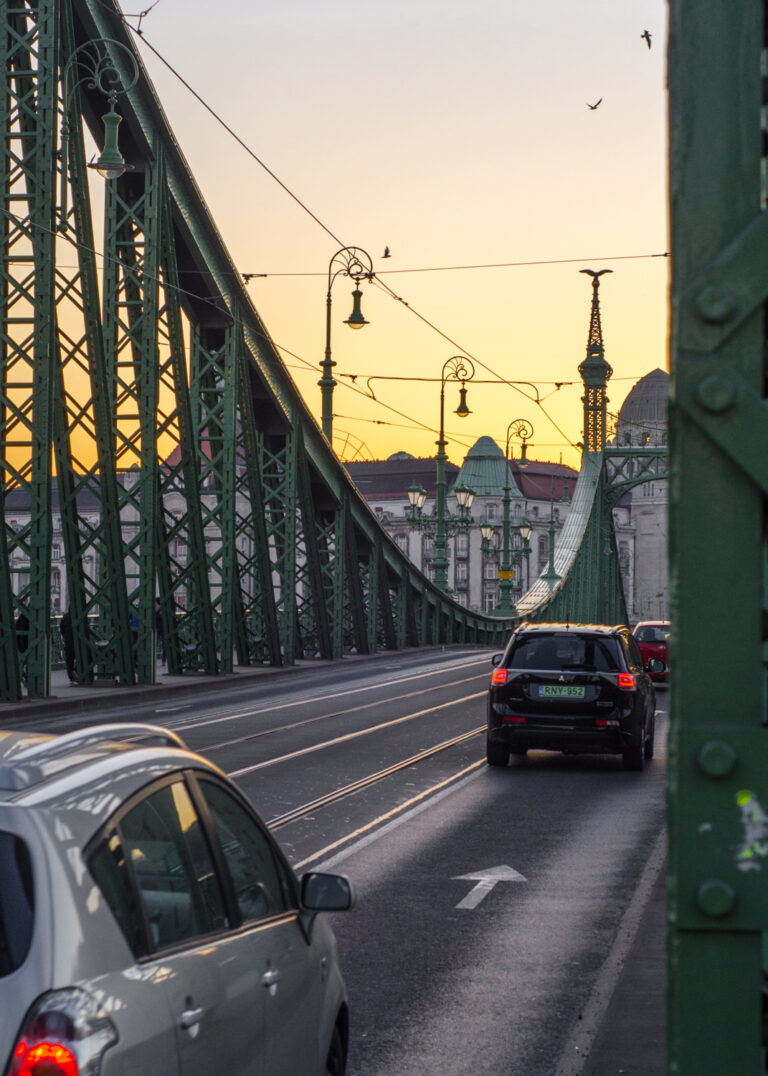
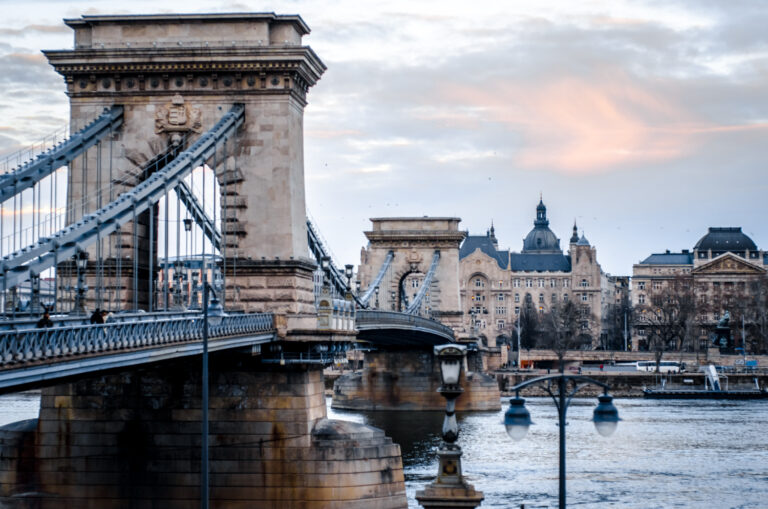
Buda Castle
Buda Castle, previously called the Royal Place, is the 2nd biggest castle complex in the world and overlooks the whole city from Castle Hill.
A UNESCO World Heritage Site that was originally constructed way back in 1265, the complex now houses the Budapest History Museum and Hungarian National Gallery.
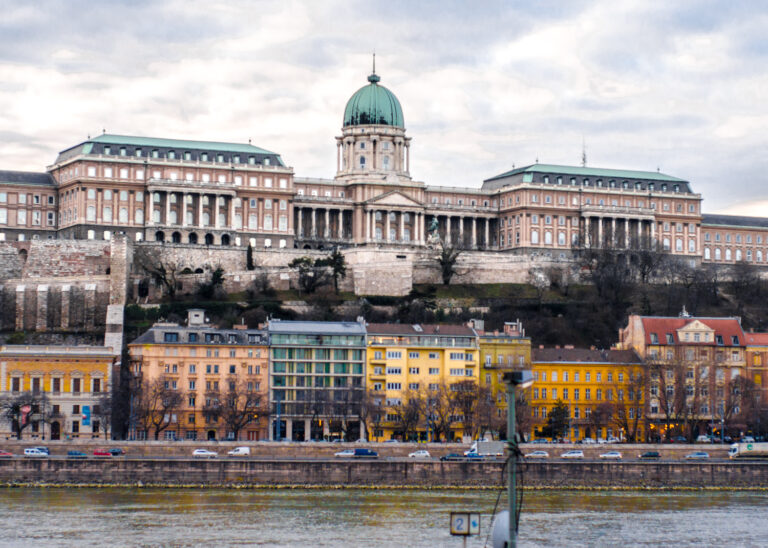
Climb the stairs from the Chain Bridge to reach the top of Castle Hill and admire the spectacular view over the city that awaits you.
The castle is free to enter.
Fisherman's Bastian
Climb the stairs from the Chain Bridge to reach the top of Castle Hill and admire the spectacular view over the city that awaits you.
The castle is free to enter.
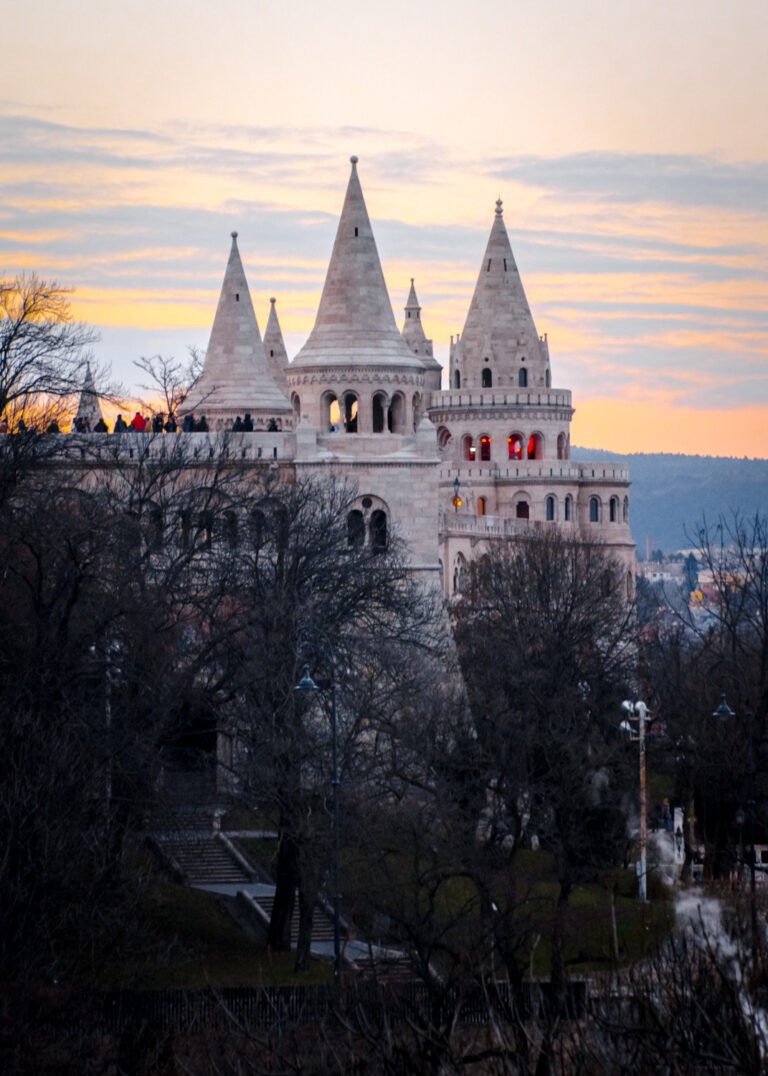
Entrance to the main balcony is open 24/7 and is totally free, but you need to pay for the upper turrets.
It’s the most popular place in the city for panoramic views over to the beautiful Hungarian Parliament Building and Danube River. Head up at nighttime to see the skyline of Budapest and bridge all lit up.
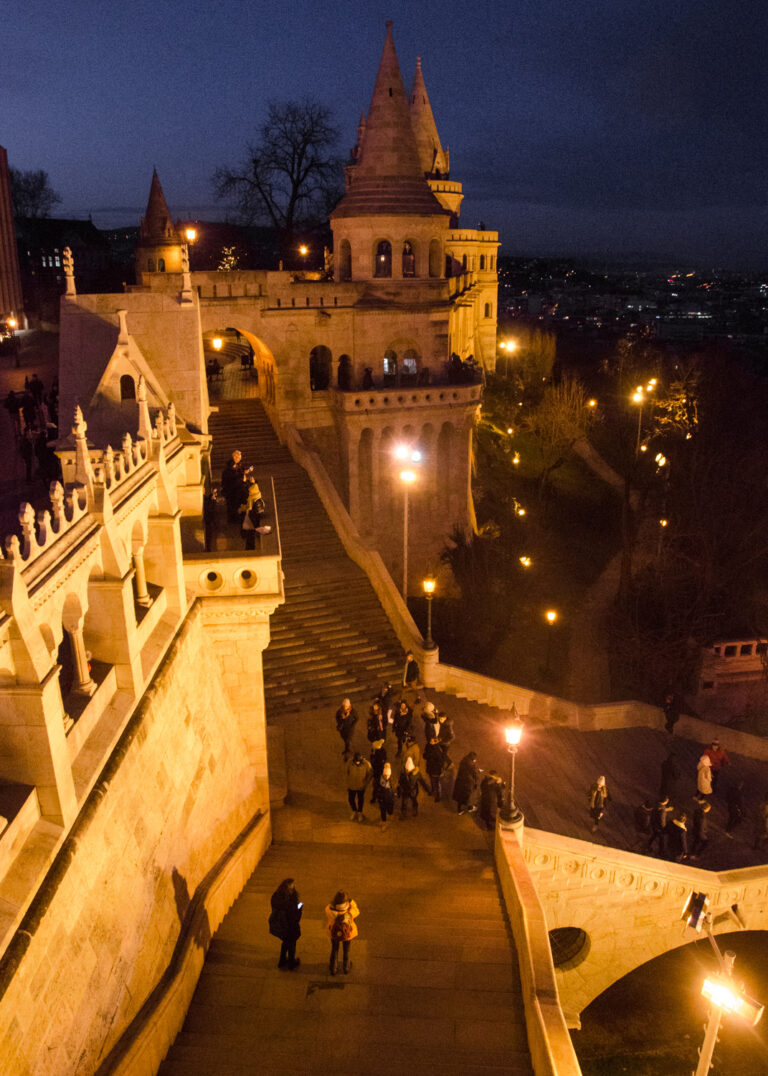
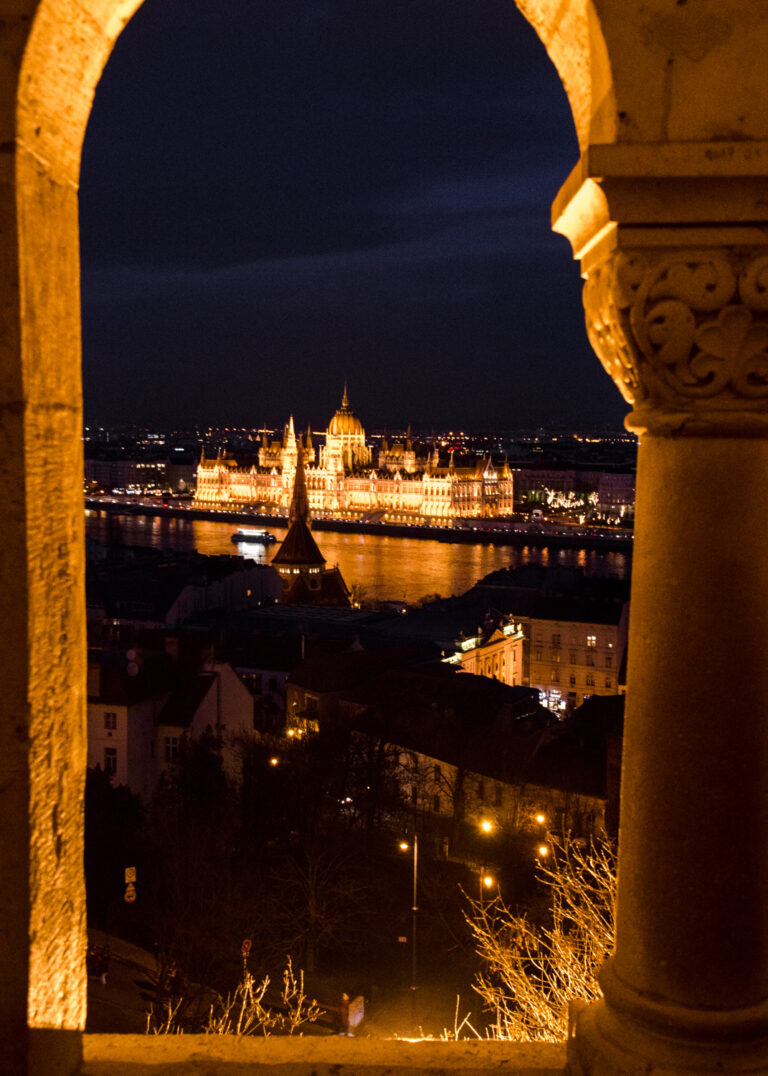
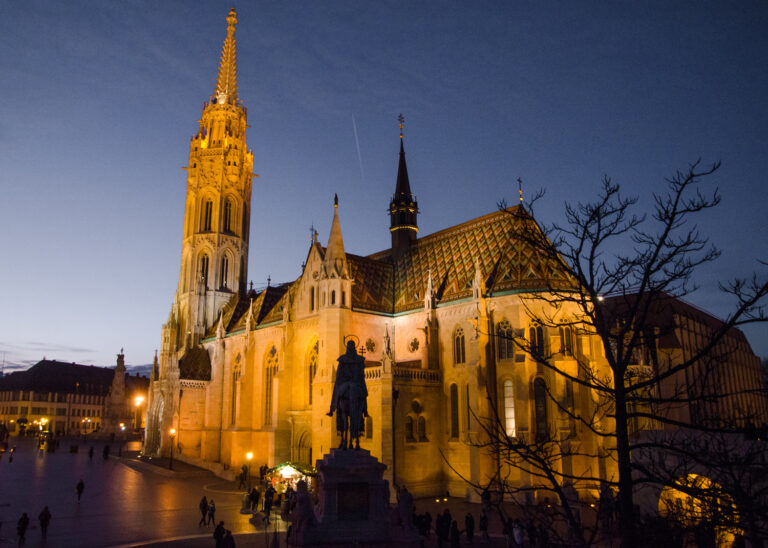
Sample Hungarian Cuisine
Hungary is home to some fantastic food.
For dinner, you’ve got to indulge in some traditional Hungarian cuisine at one of Budapest’s many affordable restaurants. TripAdvisor is the perfect travel resource for finding restaurants within your budget and reading recent reviews.
Here are some great foods to try in Budapest:
- Lángos: Deep fried flatbread usually stuffed with cheese
- Gulyás (goulash): Hungary’s National dish. Did you know goulash originated here?
- Paprikás Csirke: Chicken leg in a creamy paprika sauce
- Kolbice: Grilled sausages in a freshly baked pastry cone
- Pörkölt: Meat stew in a paprika sauce
Another great option is to book a food and drink tour around Budapest with a local guide. Check out tours on GetYourGuide here.
Day 2
The Great Synagogue
Dohány Street Synagogue is Europe’s largest and the world’s second largest synagogue which is also known as The Great Synagogue. It can seat 3,000 people
Entrance is a pricey 5000 HUF (£10.30) but once inside you have access to The Hungarian Jewish Museum as well as the Holocaust Tree of Life Memorial.
Check the latest opening times here.
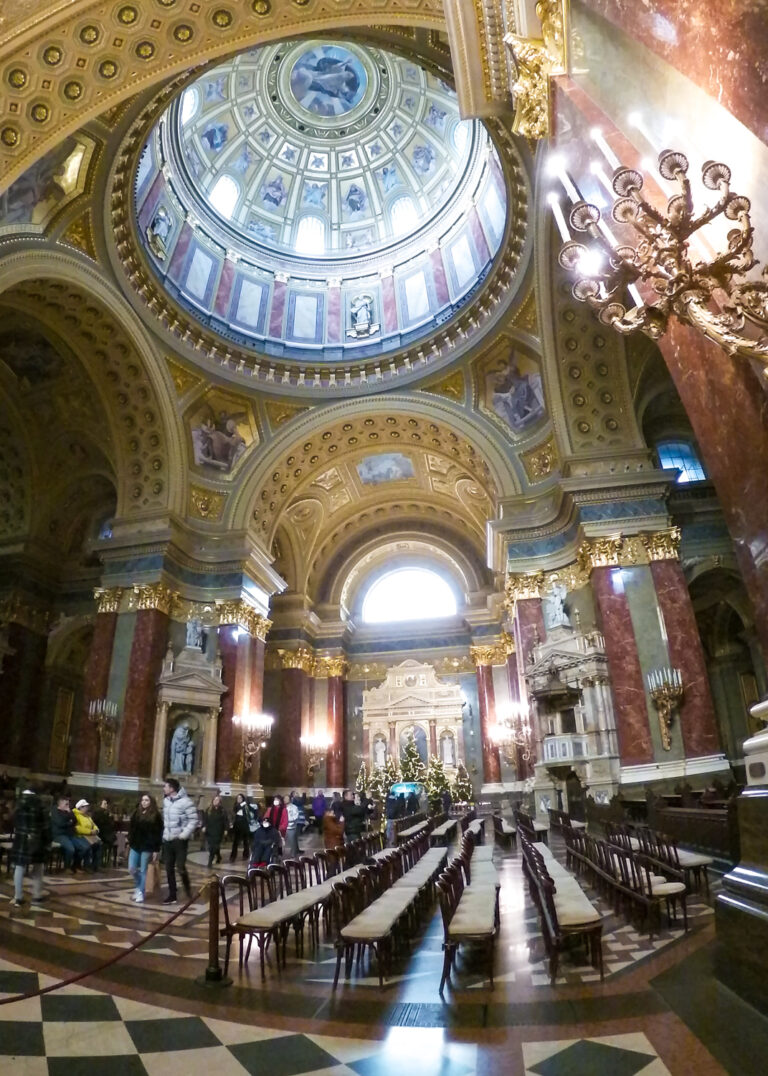
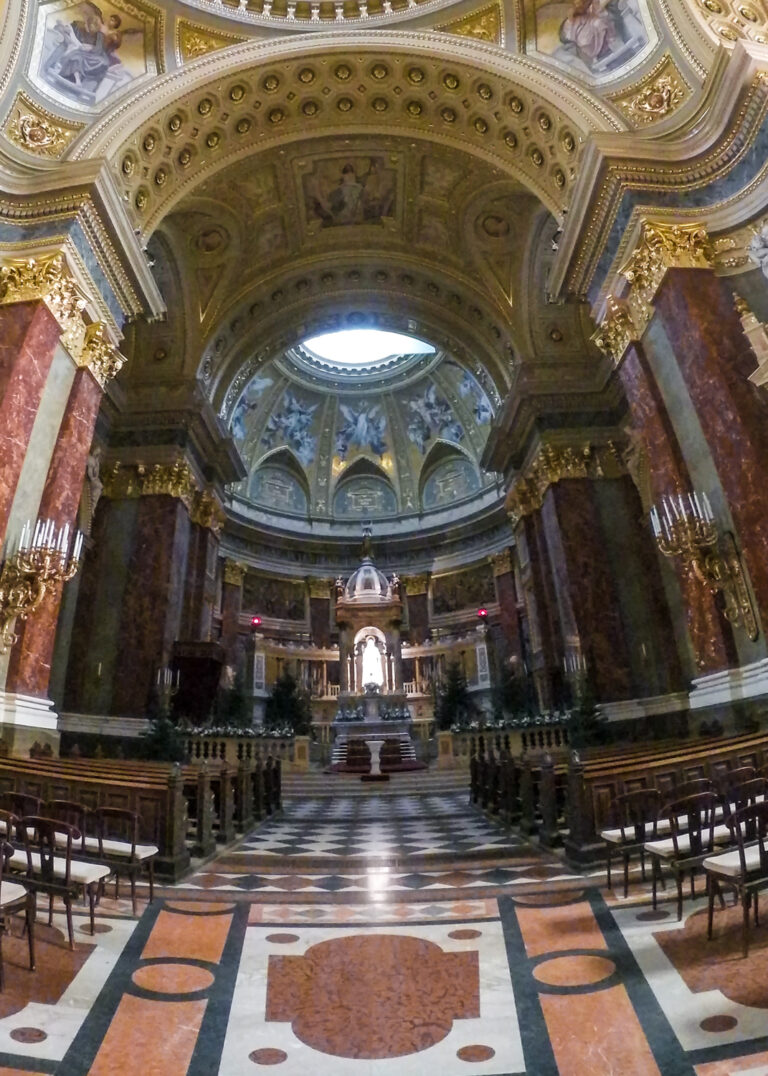
House of Terror
For a striking and eye-opening experience, head to the House of Terror.
Housed in an old secret police headquarters is a museum/memorial dedicated to the thousands of Hungarian victims of communist regimes under Stalin and the Hungarian Nazis in WWII. It is in this building that the Communist Party’s secret police held, tortured and killed people who disagreed with their regime between 1945 and 1956.
To get the most out of the experience I highly recommend that you get an audioguide to learn as much as possible.
Entrance is just 1500 HUF (£3.80) and well worth a visit if you’re interested in gaining an insight into Hungary’s dark past.
St Stephen's Basilica
The largest church in Hungary provides stunning views over Budapest from the top.
It’s worth paying a visit to St Stephen’s Basilica to admire at the architectural greatness and because it’s located right at the meeting point for most Free Walking Tours, you’ll likely be in the area at some point anyway!
Entrance is by donation but to climb to the top costs a flat rate of 1,000 HUF (£2.50).
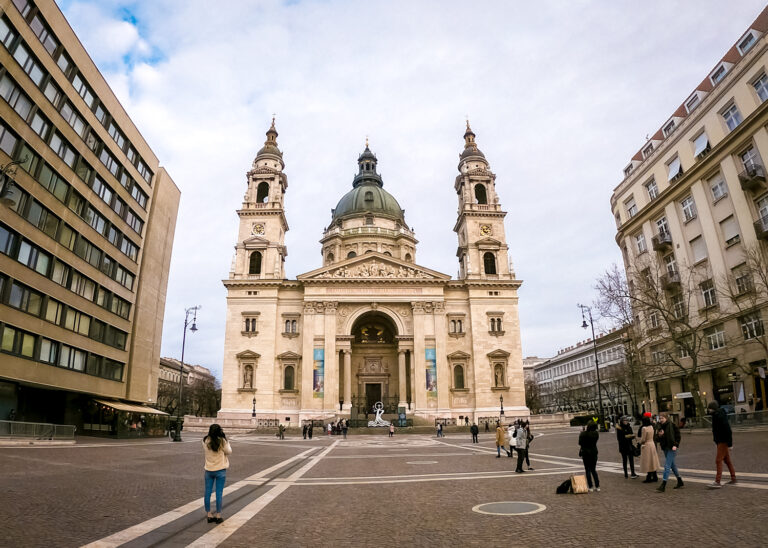
Robert Capa Museum
Continuing on the historical vibe and not far from the House of Terror is an exhibition dedicated to Robert Capa, a Hungarian war photographer who’s work is world famous.
There is a small exhibition showcasing his photos from around Europe, but note that his galleries in New York and Tokyo hold his most prolific photographs.
Entrance is 1500 HUF.
Danube River tour
Put your feet up and enjoy the most iconic sights of Budapest from the comfort of a river cruise along the Danube River.
Most boats have an upper deck for epic panoramic views of Budapest’s many stunning bridges and buildings and some include dinner and drinks. This evening cruise even offers unlimited prosecco!
Check out these awesome tours.
Visit a ruin bar
Finish your second day off at the most popular of Budapest’s many retro ruin bars, Szimpla Kert.
This large two-storied bar has been on the go since 2002 and sure is a sensory overload. In a dim-lit setting dotted with bathtubs, neon lights, graffiti art and affordable drinks… it’s no surprise that it’s the most famous bar in the whole city!
It can be a bit of a tourist hub, but the drinks are affordable and it’s a great vibe!
Other awesome ruin bars to consider in Budapest are:
- Instant & Fogas
- Kertem
- Kobuci Kert
- Ellátó Kert
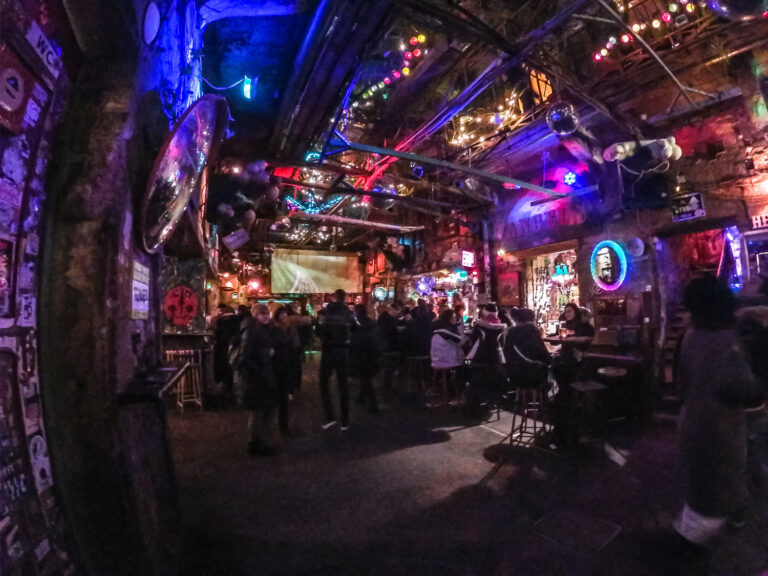
Day 3
House of Houdini
A small museum and venue dedicated to the magician Harry Houdini, who was born in 1874 in Budapest under the name Erik Weisz and quickly became a world famous escape artist and stunt performer.
The House of Houdini displays some of his personal belongings and cool props from his many shows. At the end you could be treated to a short magical performance if you’re lucky!
Entrance is 2,500 HUF (£5.20).
Great Market Hall
On the banks of the Danube River is the Great Market Hall, a large indoor market filled with souvenirs and local arts and crafts.
It is the largest and oldest market in the city.
The Great Market Hall is free to enter and worth doing a lap inside to see if anything catches your eye, but be aware that prices could be pretty high here. Time to polish up on your haggling skills!
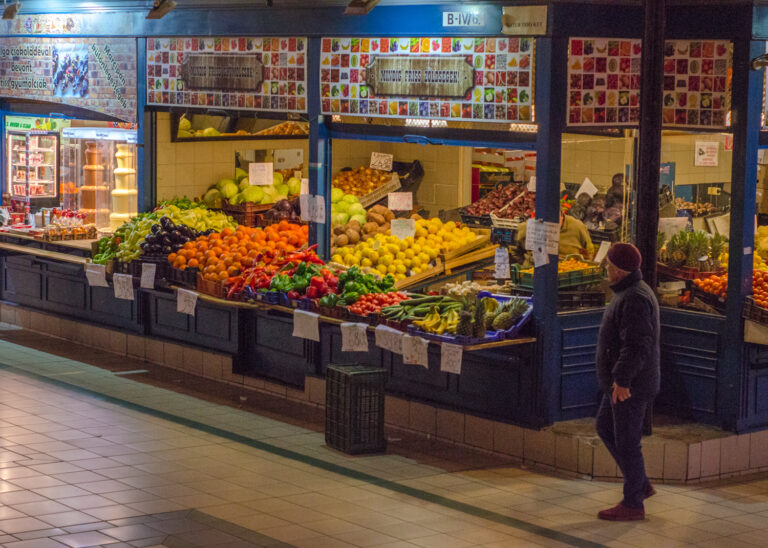
Ardrassy Avenue
Ardrassy Avenue is a lovely, tree-lined boulevard that runs through Budapest.
The street is a UNESCO World Heritage Site that connects Erzsébet Square in the centre of town to City Park. It is a popular location for any high-end shoppers but also boasts some cultural beauty of Budapest through exquisite architecture, museums and exhibitions.
Hungarian Parliament Building
Another one of Budapest’s many UNESCO sites, the Hungarian Parliament Building dominates the Pest side of the skyline.
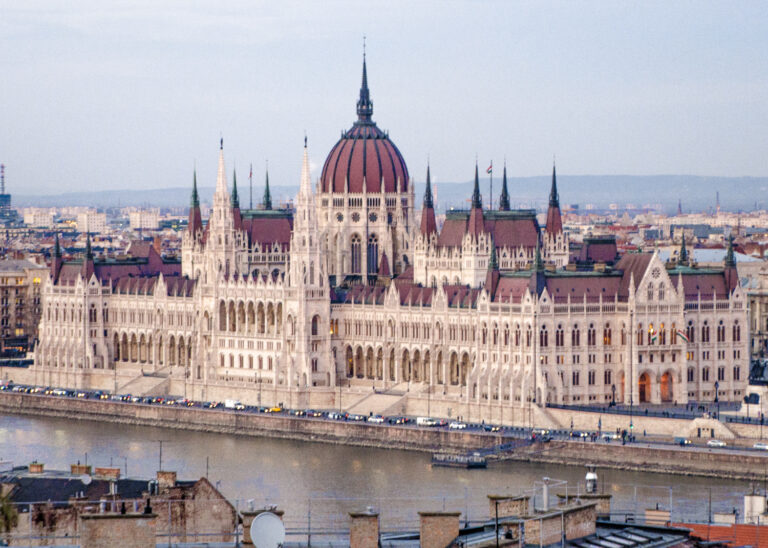
Comprising of around 40 million bricks and a red carpet that is 3km long, it’s safe to say they didn’t hold back when building this!
Inside you can view the Dome Hall, Grand Stairway and Chamber of Peers, for which the entrance fee for EU residents is 3,500HUF or 6,700HUF for non EU members.
Széchenyi Thermal Baths
Now that you’ve seen the main attractions of Budapest, spend your last afternoon or evening bathing in Europe’s largest spa.
Although I unfortunately didn’t have time to go, visiting Széchenyi Thermal Baths really is the number one ‘thing to do’ in Budapest. It has a whopping 15 indoor baths, 3 large outdoor baths and 10 saunas and first opened in 1913 in a palace that was specifically designed to house the baths.
The baths are open from 7am – 7pm on weekdays and 9am – 8pm on weekends and entrance cost around £22.
Gellert Spa
Another bathing option to the famous Széchenyi Thermal Baths is Gellert Spa.
Built in 1918, this thermal bath complex is a bit smaller than Szechenyi but features 4 medicinal pools, 6 other indoor pool, and 2 outdoor pools.
The baths are located slightly south of the city at the Gellert Hotel here, where entrance is around £17 including a cabin and locker.
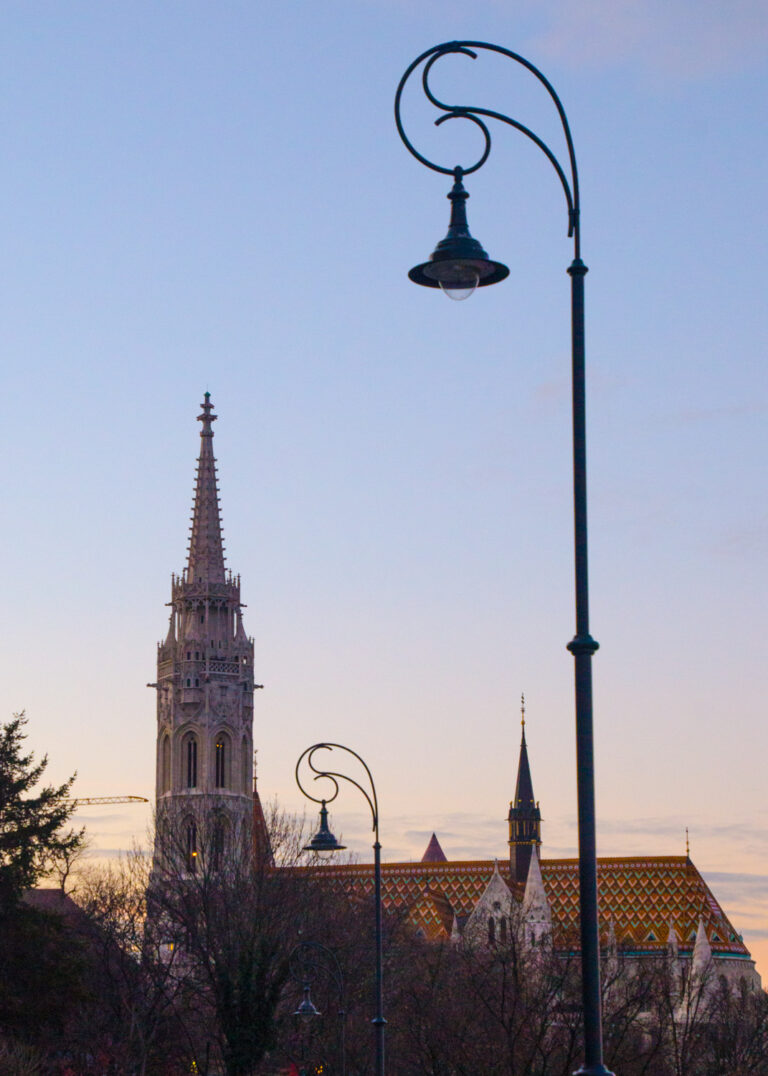
My experience in Budapest
I visited Budapest in early 2020 and spent 3 days exploring the city before continuing on a 3 month trip of the world with my partner at the time.
Budapest struck me as a great travel destination in Europe for travellers on a budget and I really loved my short stay. In my 3 day experience, splitting costs between 2, I spent £70 (not
including accommodation) but note that I didn’t go to any of the thermal
baths. Because it was January it was pretty cold, but that meant most attractions were nice and quiet which is always a cherry on top!
It’s an international city offering a solid mix of rich culture in the Old Town and cool hangouts at the ruin bars and I can’t wait to return here someday!
Best tours in Budapest

Thank you for reading this travel guide – I hope you found it helpful! Feel free to leave a comment below if you have any questions and I’ll get back to you as soon as possible
Happy travelling!
HELPFUL RESOURCES FOR PLANNING YOUR TRIP
Accommodation: Booking.com, Hostelworld
Tours: GetYourGuide, Viator, Klook, TripAdvisor
Transport: 12Go, Omio, Trip.com, Rome2Rio
WHO IN THE WORLD IS JAMES?
Click below to learn more about my story, including 5 random facts about me, some travel FAQ’s and my entire travel history.
No related posts.

